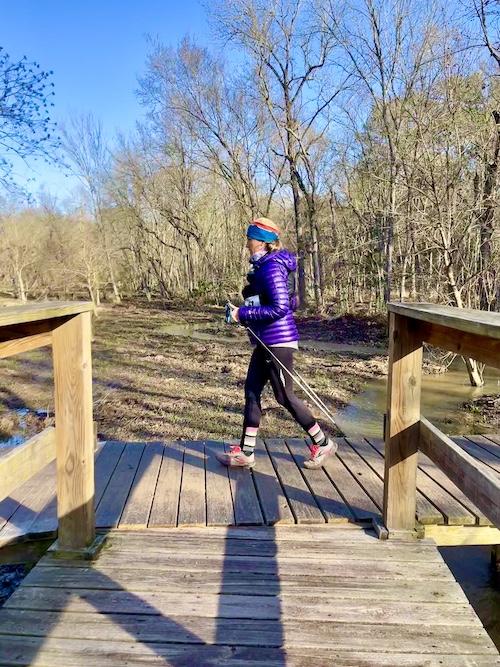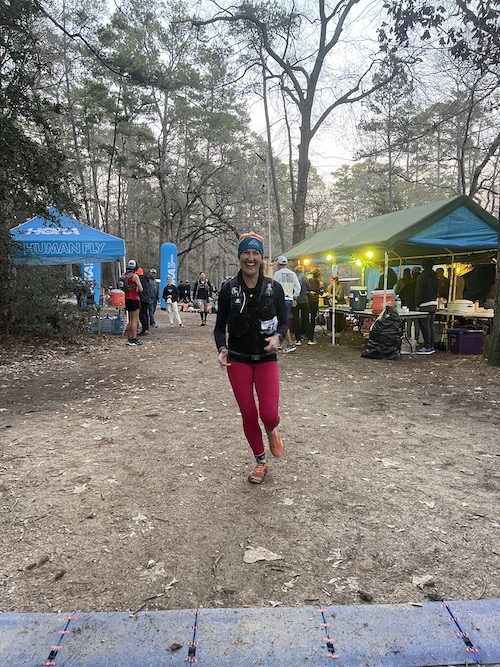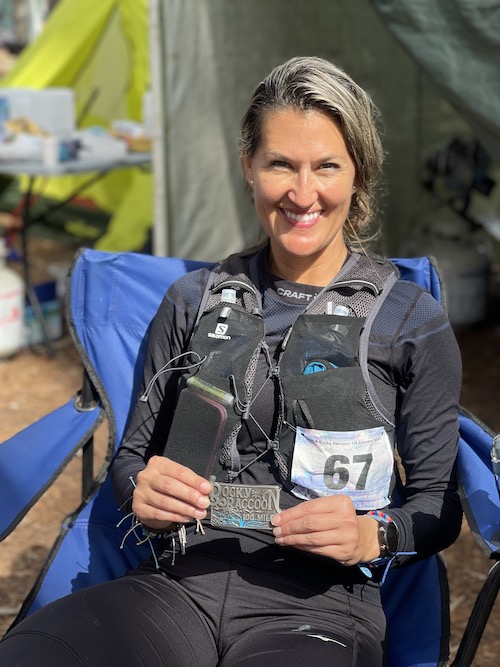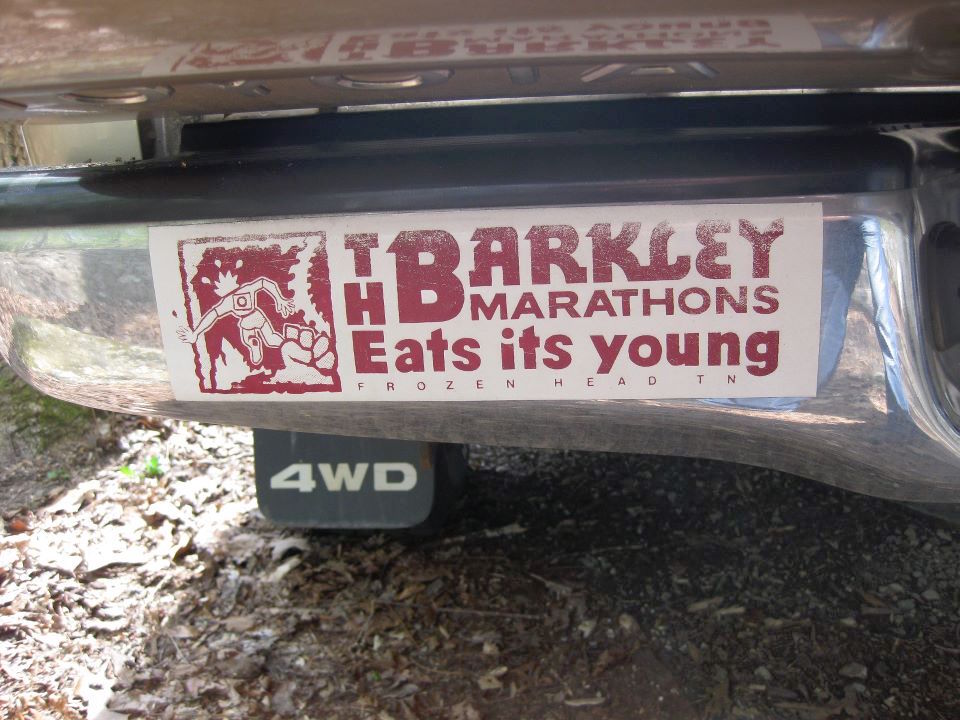Offering to pace the last 30 miles of a 100-mile race is more than just a physical challenge. The mental and emotional challenges that need to be overcome are key to getting that elusive 100-mile belt buckle.
If you’ve ever run an ultra, and I’m talking an ultra where you’re out for 24hrs+, you’ll know that it’s the people around you that can make or break your race.
When I heard my dear friend, Amanda, was going to be running her first 100 miles at Tejas Trails Rocky Raccoon in Huntsville, Texas in early February I reached out to her straight away. There was no way I was letting her embark on this journey without my help. Amanda had paced me at Moab 240 in 2021 so I owed her one.

The race is 5 x 20 mile loops at Huntsville State Park. Amanda had a solid start and ran the first 50 miles in 12 hours with crew support of boyfriend Kevin, Mum and her daughters Ryssa & Brooke. Now heading into unknown territory at the 60 mile mark there was the expected slow down as she headed into the dark with Kevin pacing her for a 9 mile segment. She came in at the 70 mile mark just after midnight looking pretty out of it, ready for me to take the pacing reigns.
The gap to making the cut-off had been closing with the slow down so I knew I had to do my job right or Amanda wouldn’t achieve her goal she’s worked so hard for. I know Amanda pretty well & we’d conquered the Rim 2 Rim 2 Rim in the Grand Canyon together a couple of years ago but I still wasn’t sure how to tackle the pacing. Do I use the carrot or the stick for motivation? How hard can I or should I push her?

I decided to ‘give’ Amanda a nap for 24 mins before we tackled the last 20 miles, the final lap. She was sleep walking and I knew it was a risk to keep going, if she stayed at that pace, we wouldn’t make the cut-off but if we stopped to sleep, we might also might not make the cut-off. When she awoke after the short nap, I told her we have good news and bad news…good news being we are heading out to give it our best shot and finishing is within grasp, bad news is that we needed to do the last lap faster than the lap she’d just done and average 2.3 miles per hour to make it. Tears flooded but her mind was set, she hadn’t come so far & worked so hard to give up!
We hit the trail and Amanda worked like a beast, she was truly giving her all and it humbled me to tears a few times during those last miles together. I paced her to run a bit then walk, then run again, she did as instructed and before we knew it, we were making up time. She pushed one section so hard it was probably her fastest split! I made sure she ate, she drank, and we kept ticking off the miles.

And then she did it! She crossed that 100 mile finish line with a full hour & a half to spare. Well and truly spent, she collapsed into the arms of her twin daughters Ryssa & Brooke, Mum & boyfriend Kevin. She had done it. We hugged each other for what seemed like eternity, tears in full flow, grateful to each other for this shared experience. I couldn’t have been prouder.

Why you should consider pacing someone
It should be fun! It’s also a great way to deepen your own knowledge and appreciation for running the distance. Sharing this experience with someone will ultimately bring you closer together; the world disappears and your only focus is to stay alive and relentless forward motion towards that finish line. Simple right?
Ideally the best pacer is someone who understands the distance and what the runner will be experiencing so you can troubleshoot along the way. If you’re comfortable with the marathon distance you’re in a good place to pace but bear in mind that pacing someone at the back end of an ultra will most likely be at a much slower pace than you’re accustomed to, depending on your runner of course. You may find it’s more walking than running so a 20 mile pacing stint could take you about 10hrs.

As a pacer you need to look after your runner BUT you are no good to your runner if you go down, so you have to pay attention to your own hydration, nutrition and body. Make sure you sleep well before, eat a good meal and pack your bag with all sorts of extras, toilet paper, batteries, torch, layers, food, gels and a baggie with salt tabs, Tylenol & Imodium. If your runner doesn’t need it, chances are you might be able to help someone else too. Even if you’re an experienced ultra-runner and think you might not need a load of stuff you can still get into trouble if you’re too blasé about it and the last thing you want is your runner not finishing because you went down. Know your limits, don’t try to be a hero by pacing too far a distance. It’s their race, not your chance to get some miles in.
Your job as a pacer may differ runner to runner, race to race but essentially, you’re a companion, a breath of fresh air to motivate & inspire, keep your runner on course and keep them safe, act as a coach and psychologist to keep their spirits up and encourage them to keep at it. You need to make sure your runner is drinking and eating, enough and at regular intervals. You’ll need to keep them on track for the pace they need to do to accomplish their goal so monitoring the time spent at checkpoints as well.



The art of pacing is also so important, you need to know when to push your runner and when to back off. This is where your own experience can help and the more you know your runner the better as you’ll have a better idea of how to push them without breaking them which can be a very fine line. Some people respond differently to tough love or a softer approach but from my own experiences I find we all need a bit of tough love and a take no bulls**t approach! If I hadn’t had given Amanda a dose of tough love and a dose of realism that the finish was in jeopardy, she wouldn’t have got her buckle so as a pacer you also need some broad shoulders.
Don’t let your runner quit for anything less than something major. Fatigue, diarrhoea & vomiting are some of the issues that runners will experience that might convince them to quit, or those around them to let them quit but in most cases, they’ll regret that decision later. Obviously if it’s severe that’s different but most of us will deal with these issues without harming ourselves. On the other hand, there are those that won’t quit even when they should so just keep a wise and logical mind when making decisions.


Most times your pacer expects nothing in return, except maybe repaying the favour when you next need a pacer but it’s fairly reasonable to expect to cover your pacers accommodation at the race (a couch or blow up mattress on the floor will do) and feed them while they’re with you. Sometimes you might offer to pay travel expenses, but it all depends on everyone’s situations. To save any issue it’s good to discuss all this before committing so everyone knows what to expect.
Some races don’t allow pacers but allow crew and that can also be a huge help in more than just having bits on hand for you (food, clothing etc) but a huge help morally with encouragement and seeing a friendly face when you’re at your lowest, so crewing is also a great way to help out a runner.
There’s no shame in having someone pace you, if the race allows it then you might as well, it makes it an even more memorable experience for both the runner and the pacer. The camaraderie of running through the night and/or day with someone when you’re at your most vulnerable is something you just can’t replicate in any other way and let’s face it, what else would you rather be doing on a Saturday night?
Lucja Leonard is an ultra runner and coach and currently lives in the US with her husband Dion, Gobi the dog and Lara the cat.





